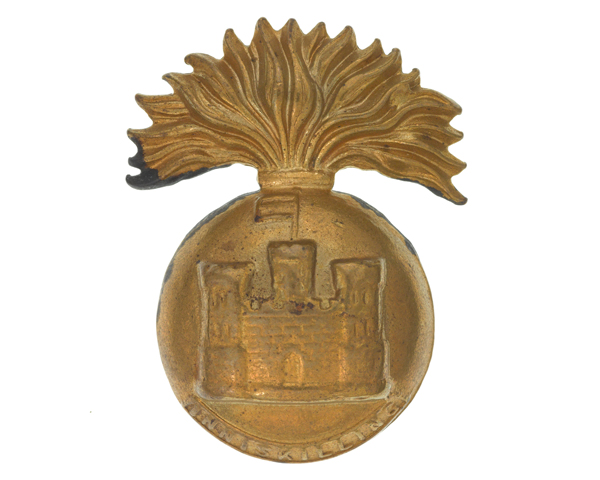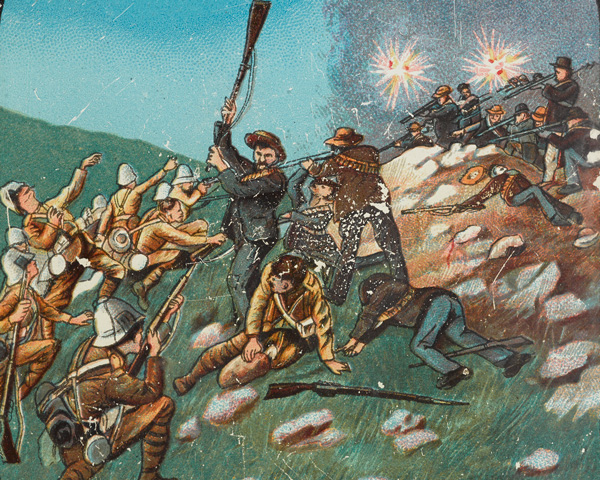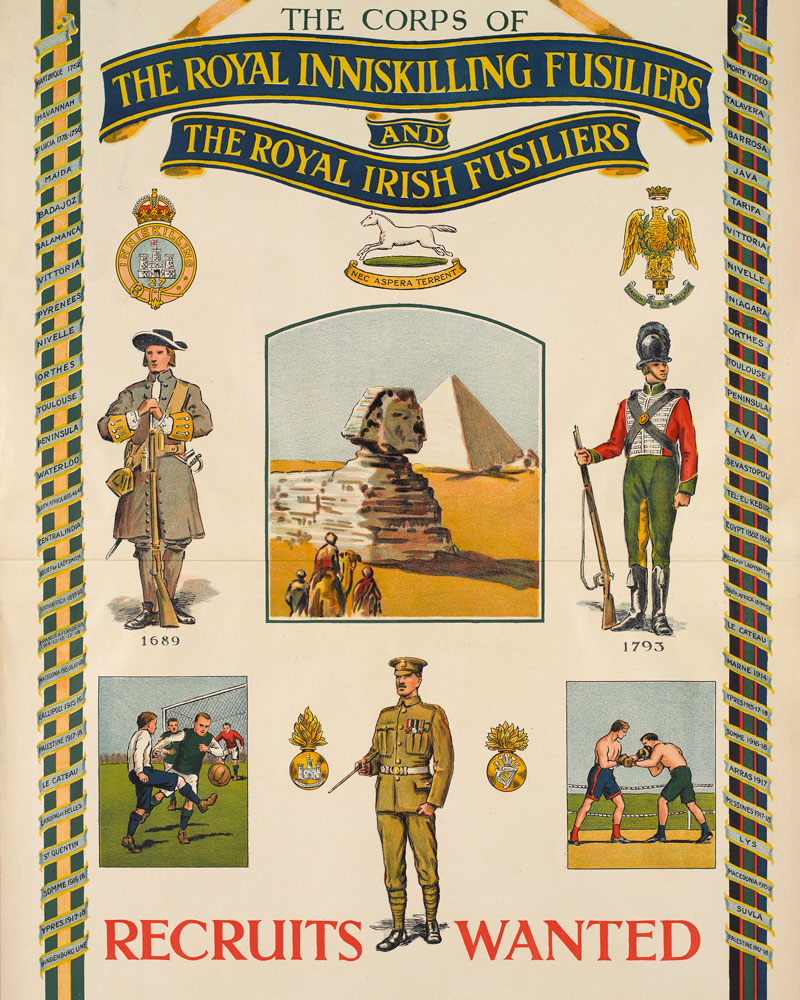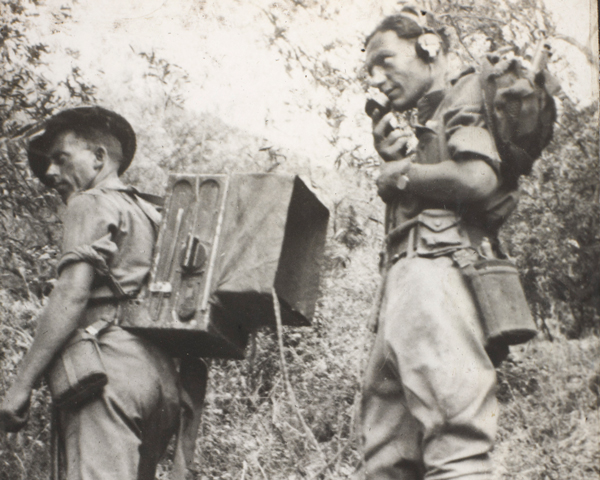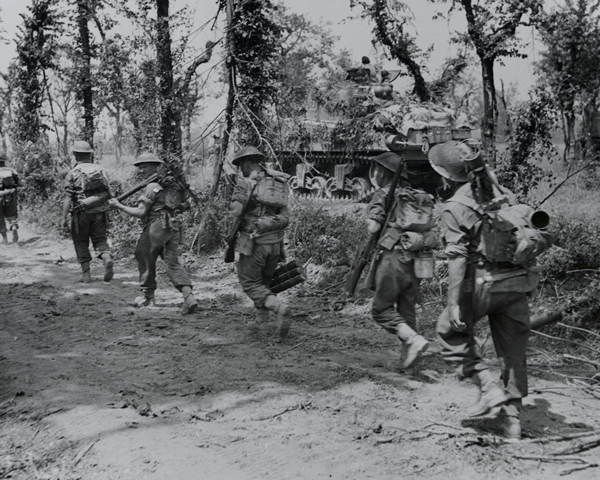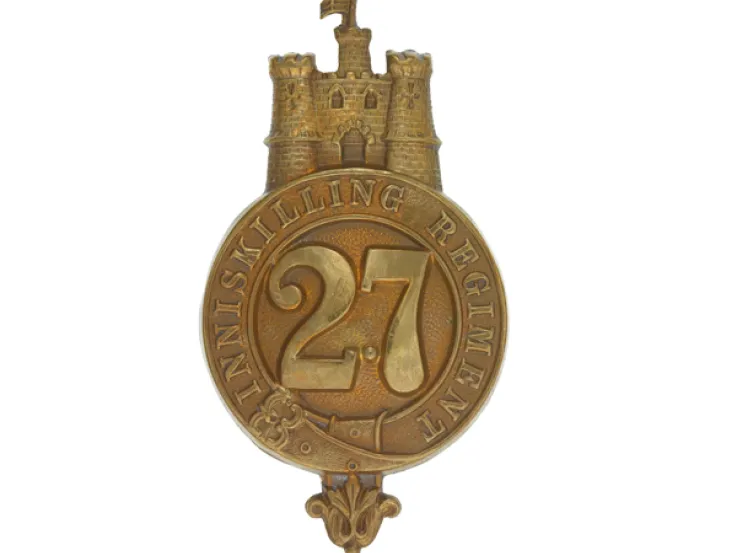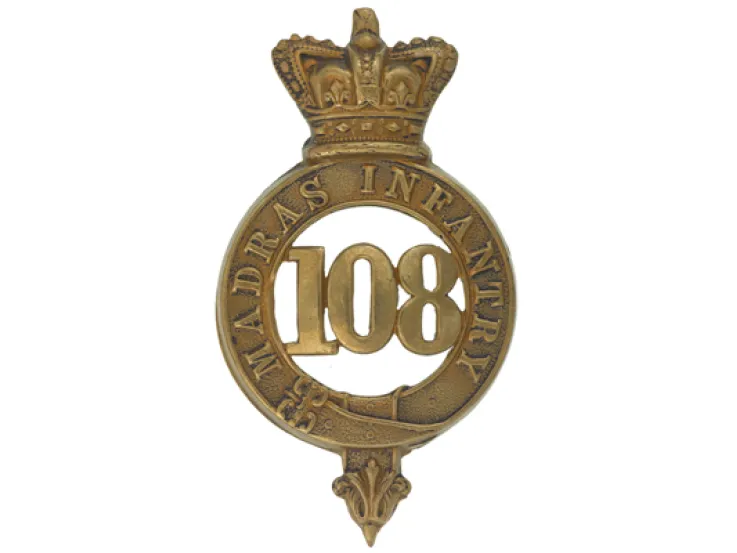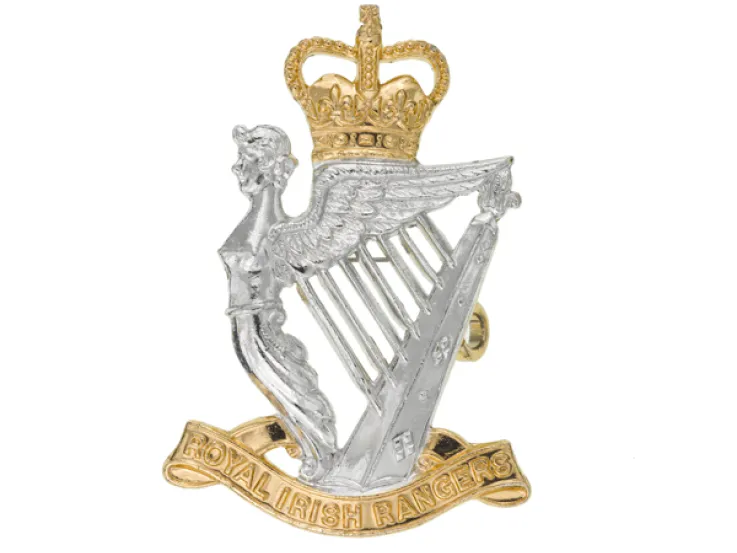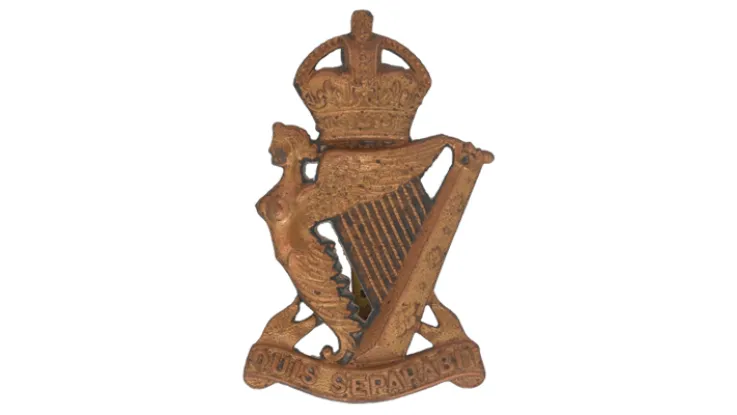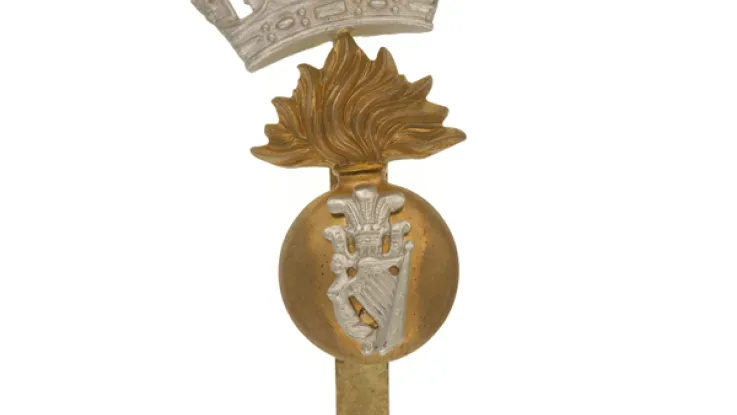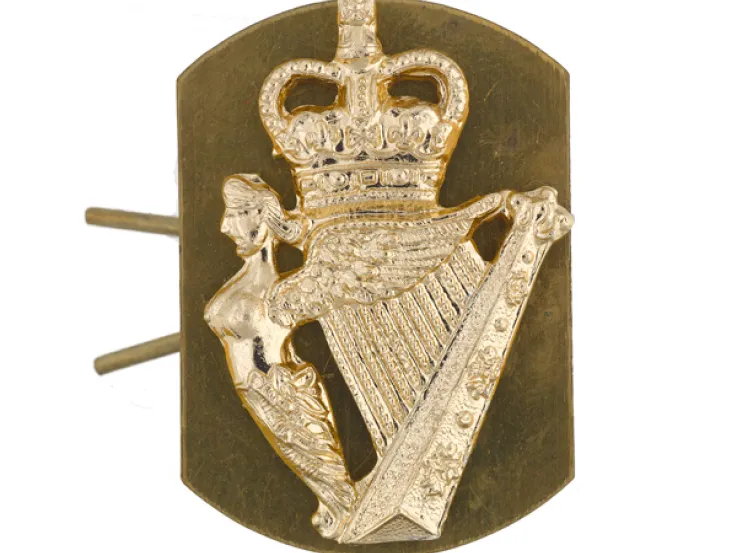Origins
This was the regiment for four Irish counties: Donegal, Londonderry, Tyrone and Fermanagh. It was formed in 1881 by merging the 27th (Inniskilling) Regiment of Foot and the 108th Regiment of Foot (Madras Infantry). These became the new unit's 1st and 2nd Battalions respectively.
During the next two decades, both battalions undertook garrison duties across the British Empire, including Hong Kong, Singapore, Ireland, South Africa and India. While stationed on the Indian subcontinent in the 1890s, 2nd Battalion also fought in the Tirah Expedition (1897) on the North West Frontier of India.
Both battalions fought in the Boer War (1899-1902). 1st Battalion landed in Durban in November 1899, fighting at Colenso (1899) and taking part in the Relief of Ladysmith (1900). 2nd Battalion arrived in South Africa from India in late 1901 and took part in the anti-guerrilla operations.
Both battalions spent the years before 1914 stationed at home, or on postings to Egypt, Crete, Malta, China and India.
First World War
In August 1914, 2nd Battalion moved to France with the British Expeditionary Force, staying there throughout the First World War (1914-18).
1st Battalion remained in India until 1915, when it deployed to the Middle East before landing at Gallipoli (1915). In March 1916, it arrived on the Western Front.
The regiment also formed nine New Army battalions, which fought in Salonika, Palestine and on the Western Front. A composite battalion of men from the 3rd, 4th and 12th Battalions, as well as men home on leave, also fought against the Easter Rising in Dublin in 1916.
Inter-war
When Ireland gained its independence in 1922, most of the Irish line infantry regiments of the British Army were disbanded. However, since three of the Inniskillings' four recruiting counties were in Northern Ireland, it was only the unit's 2nd Battalion that was disbanded that year.
The regiment spent the inter-war years in India, Iraq, England, Northern Ireland, Malaya and India.
From 1924 to 1937, the Royal Inniskilling Fusiliers and the Royal Irish Fusiliers formed a single corps, although both regiments retained their original titles. At the end of that period, the Inniskillings re-formed its 2nd Battalion.
Second World War
2nd Battalion deployed to France on the outbreak of the Second World War (1939-45) in 1939. It then fought in the retreat to Dunkirk in June 1940. It later assisted in the capture of Madagascar in 1942, before joining the Sicilian and Italian campaigns from 1943 to 1945.
It was joined in Italy by 6th Battalion, which had earlier fought in Tunisia (1943) and Sicily (1943). In June 1944, the two battalions were merged, going on to fight in the remainder of the Italian campaign.
1st Battalion remained in the Far East throughout the war, fighting in the Arakan in Burma from 1942 to 1943, and moving to Hong Kong following Indian partition in 1947.
Post-war
2nd Battalion was briefly disbanded again from 1948 to 1952. On being reformed, it went on to serve in the Suez Canal Zone and on Cyprus, where it engaged EOKA insurgents in 1954-55. It was disbanded permanently in 1956.
Meanwhile, 1st Battalion fought post-colonial insurgencies in Malaya (1948-60) during 1949, and in Kenya (1952-56) from 1953 to 1955. Other postings for the regiment during the 1950s and 1960s included the Suez Canal Zone, West Germany, Kuwait and Cyprus.
Legacy
In 1968, the regiment was merged with The Royal Ulster Rifles and The Royal Irish Fusiliers (Princess Victoria's), to form The Royal Irish Rangers (27th (Inniskilling), 83rd and 87th).
Regimental museums
The National Army Museum works with a network of Regimental and Corps Museums across the UK to help preserve and share the history and traditions of the Army and its soldiers.
Discover more about The Royal Inniskilling Fusiliers by visiting the Inniskillings Museum at Enniskillen Castle.


